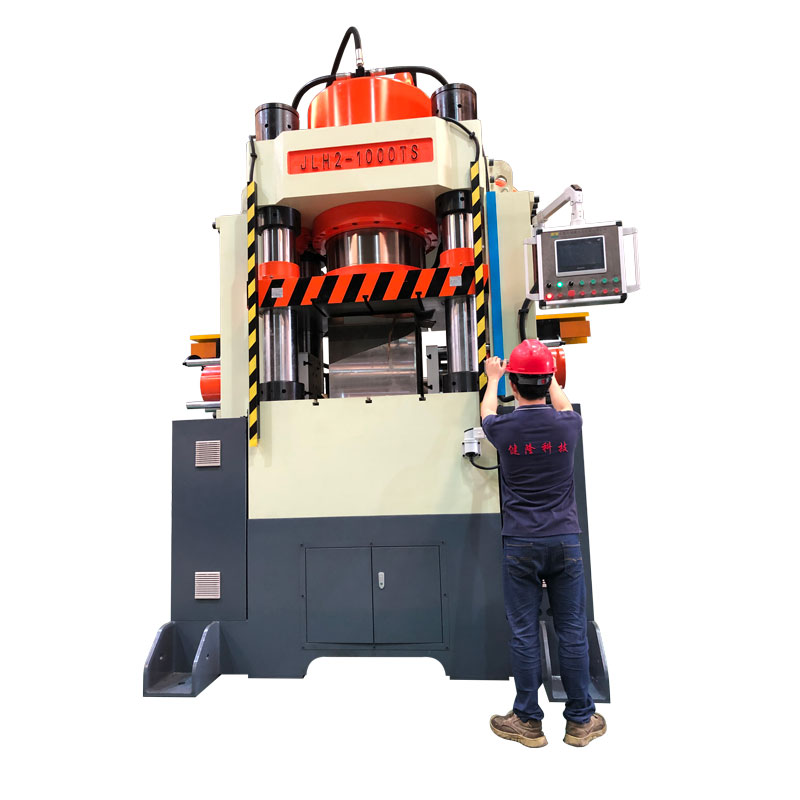First, the harm of oil pollution to the hydraulic system
Different pollution ways and pollutant forms have different specific harms to hydraulic system.
1, particulate dirt blockage and sedimentation, causing component failure
Various particles of dirt in the oil will gradually accumulate in the gap of the spool, which will cause the spool blocking failure. It will make the damping hole or throttle hole in the hydraulic component blocked, resulting in component failure and so on.
For example, the center damping hole of the plunger pump is blocked, which will destroy the static pressure support between the shoe and the swash plate, cause dry friction, make the pump abnormally warm, and even burn damage; The damping hole on the pressure control valve such as the relief valve is blocked, resulting in the failure of pressure control.
The blockage and sedimentation of particulate dirt will destroy the seal between the piston components of the hydraulic cylinder, make the high and low pressure cavity string, destroy the speed stability or creep and vibration.
2, increase wear, resulting in deterioration of component performance
There are three kinds of wear caused by pollution: solid particle wear, corrosion wear and cavitation wear. Solid particle wear is the main form of pollution wear, including the following aspects.
2.1 Cutting wear.
When a particle of comparable size with the clearance of the moving pair enters the clearance and is embedded in the soft surface of the material, it will have a cutting effect on the other surface of relative motion.
2.2 Fatigue wear.
The particles entering the moving pair will roll the surface of the material and cause fatigue damage to the material.
2.3 Viscous wear.
Solid particles cause plastic deformation of the material, forming surface convex and concave, resulting in viscous wear.
2.4 Erosion wear.
When the liquid flow flows through the surface of the component at a high speed, the solid particles have an impact on the surface and cause erosion wear.
Pollution wear is the main reason leading to the deterioration of component performance. Taking hydraulic pump as an example, pollution wear will lead to the increase of internal leakage, the decrease of output flow, and the decrease of volumetric efficiency. For example, the oil distribution pan of the plunger pump is scratched, which makes the high and low pressure cavity of the pump collude, resulting in serious internal leakage, and even cannot output pressure oil; The flow regulating mechanism of variable vane pump is worn out and fails.
3, accelerate the deterioration of oil performance
The pollution of hydraulic system oil will also lead to the deterioration of the physical and chemical properties of the oil itself. The air invading the oil will reduce the bulk elastic modulus of the oil, make the system respond slowly and lose stiffness, cause cavitation and cavitation, cause pressure shock, vibration and noise, accelerate the deterioration of the oil and reduce the lubricity of the oil.
The water in the oil that the cooler leaks or intrudes through condensation will corrode metal parts, accelerate the oxidation and deterioration of the oil, and produce colloids with various additives in the oil, leading to the viscosity of the hydraulic valve core and the blockage of the filter.
2. Control measures
Different measures should be taken for different sources of pollutants.
For the residual pollutants inside the system in the process of processing and assembly, it is mainly to be removed by cleaning and flushing, and at the same time, it is necessary to eliminate those factors that are not conducive to cleaning and flushing from the design aspect, and mainly to strengthen the protection of external intrusion pollutants. The pollutants generated in the work are mainly removed by filtration and separation. The specific measures for pollution control are as follows.
1. Control measures for residual pollutants in the system
The manufacturing of hydraulic components and oil block should strengthen the cleaning and deburring between processes to prevent parts from falling and bumping;
Before assembling hydraulic components and oil circuit blocks, carefully clean the parts and strengthen the pollution control of the factory test and packaging;
To ensure the cleanliness of the components and prevent contamination in transportation and storage, the oil tank, tubing and pipe joints should be thoroughly cleaned and cleaned before assembling the hydraulic system, and the pipes that fail to be assembled in time should be covered; Assembly in a clean environment with a clean method;
New and overhauled systems are temporarily removed from precision components such as actuators and servo valves and replaced with flushing plates;
Before connecting with the system, ensure the internal cleaning of the actuator.
2, the system external intrusion of pollutants control measures
Oil storage equipment should be placed in a cool and dry place;
When oil is injected into or discharged from oil drums or tanks, portable filtration devices (such as filters or oil filter trucks, etc.) should be passed;
Ensure effective sealing of the cap or valve of the oil drum or tank, and remove contaminants around the cap before removing oil from the oil drum;
The oil injected into the tank should be filtered according to the regulations;
The equipment used for oil injection should be cleaned first;
The oil leakage of the system shall not return to the tank without precipitation;
The gas tank connected with the large must be equipped with a ventilation filter, the ventilator should be adapted to the working environment and system temperature of the machine, to ensure that the ventilator is always installed correctly and fixed tightly, especially polluted environment can consider using a pressurized tank or breathing bag;
Pay attention to seal all openings of the tank and through the tubing to prevent air from entering the system, especially through the suction tubing of the hydraulic pump.
The joint of the suction pipe in the negative pressure area or pump should be ensured to be airtight, and the end of all pipes should be ensured to be lower than the lowest liquid level in the tank;
The suction pipe of the hydraulic pump should be low enough to prevent air from entering the pump through the vortex when the liquid level is low;
Stop water from coolers or other sources from leaking into the system;
Strictly follow the cleaning procedures when performing leak prevention repairs.
3, the system generates pollutants control
It is necessary to set a filter with a certain filtering accuracy and a certain capacity in the appropriate part of the system, and often check and maintain in use, clean or replace the filter element in time, so that the hydraulic system is far away from or isolated from high temperature heat sources (such as the furnace), design and maintain the oil temperature at the best value, and set the cooler when necessary.
When it is found that the system pollution exceeds the prescribed level, the cause should be identified and the cause of abnormal pollution should be eliminated in time;
When the on-line filter of the system alone cannot purify the excessively polluted system oil, the portable filter device can be used for in vitro (off-line) circulation filtration and purification;
Periodic analysis of oil samples to determine the effects of particulate contaminants, heat, moisture, and air, indicating which factors need to be controlled more or replaced;
Whenever the tank is emptied, all residual contaminants in the tank should be thoroughly cleaned, and if necessary, repaint or spray other surface treatments should be applied. The system should be refueled immediately after completion, otherwise all openings should be closed.
For the above reasons, in addition to setting filters in front of relevant pipelines or components in the design of hydraulic power source devices and setting ventilation filters in the tank top cover, appropriate sealing measures should also be taken between the connecting surfaces. For the wave pressure device working in a high dust environment, it is recommended to install a dustproof device (cover) on the hydraulic station. For the central hydraulic device of large metallurgical equipment, it is recommended that Jiang hydraulic station be placed in a special underground chamber to prevent the invasion of dirt.
Cold-extruded four-column press

Contact: Jessie
Phone: 18988729072
E-mail: lifuyan45@gmail.com
Whatsapp:+8618988729072
Add: Guangyi Industrial Park, No.2 Jinfu West Road, Tanglip, Liaobu Town, Dongguan City, Guangdong Province, China
We chat
